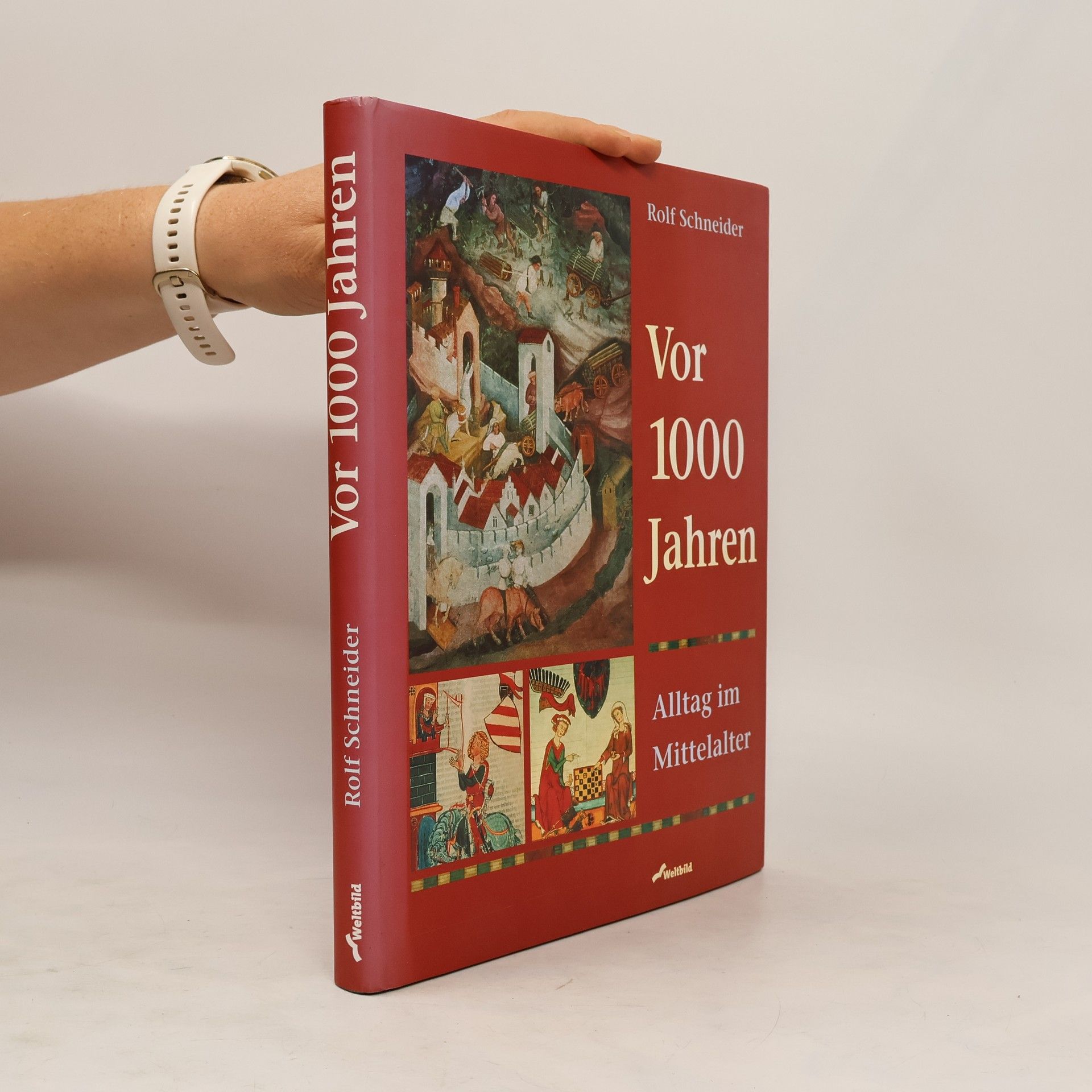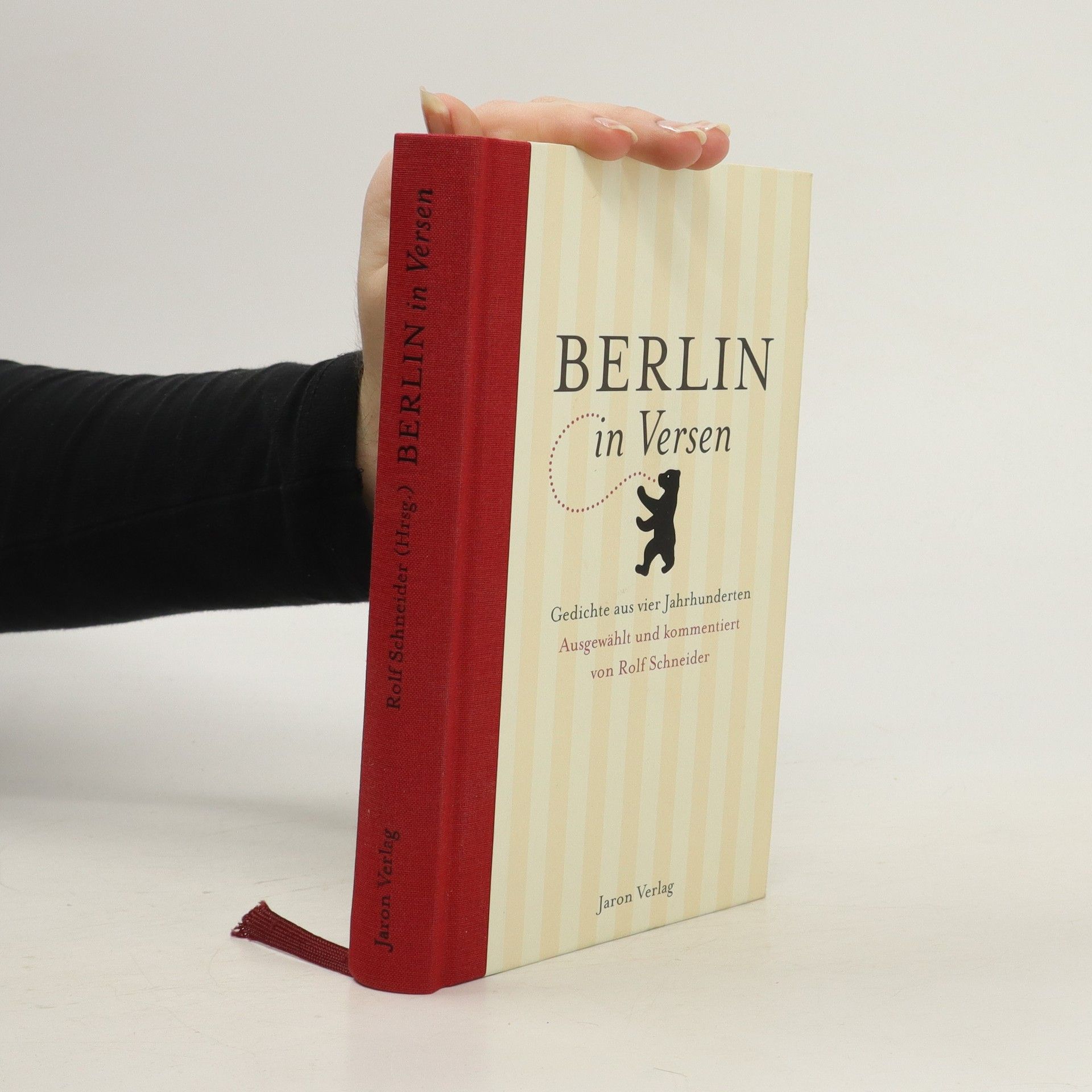Rolf Schneider Book order







- 2025
- 2024
Poisson Hyperplane Tessellations
- 564 pages
- 20 hours of reading
Exploring the intersection of probability theory and geometry, this book delves into random mosaics created by Poisson processes of hyperplanes. It examines the independence properties of these processes and their long-range effects, revealing a multitude of phenomena significant in both geometric and probabilistic contexts. The text covers various perspectives and comprehensively discusses established literature, making it a valuable resource for graduate students, professional mathematicians, and researchers across multiple disciplines, including physics and engineering.
- 2024
Theaterblut
Roman
- 2022
Focusing on geometric applications, the book introduces convex cones and explores their fundamental properties. It covers key geometric functionals like conic intrinsic volumes and Grassmann angles, while also developing general versions of important formulas such as the Steiner and kinematic formulas. Selected examples from diverse topics, including polytope theory, stochastic geometry, and Brunn-Minkowski theory, illustrate the concepts, making it a comprehensive resource for understanding the geometry of convex cones.
- 2021
"Sommer 1914. In Janowitz, einem mittelböhmischen Schloss, treffen zwei prominente Autoren aufeinander: Rainer Maria Rilke, Lyriker und Romancier, und Karl Kraus, scharfzüngiger Herausgeber der Zeitschrift "Die Fackel". Die beiden kennen sich. Sie pflegen zueinander eine Haltung aus Respekt und Missgunst. Den Anlass dazu liefert ihnen Sidonie von Nádherný. Sie ist schön, hochgebildet, weitgereist, sie will sich emanzipieren, was ihr in manchem gelingt, doch die Konventionen ihrer Herkunft kann sie nicht abstreifen. Die beiden Literaten werben um ihre Gunst. Kraus ist ihr heimlicher Geliebter, der sie auch heiraten möchte. Rilke erfährt davon. Eindringlich warnt er Sidonie vor der ehelichen Verbindung mit einem Juden, und sie hört auf ihn. Der Erste Weltkrieg bricht aus, von Rilke bejubelt, von Kraus radikal abgelehnt. Der schreibt darüber sein ausuferndes szenisches Werk "Die letzten Tage der Menschheit", Sidonie hilft ihm dabei. Sie lebt weiterhin mit ihm, die Beziehung zu Rilke gibt sie nicht auf. Ihr Verlöbnis mit dem italienischen Aristokraten Guicciardini hat sie bereits zu Kriegsbeginn beendet, ihre spätere Ehe mit dem Arzt Max Thun wird scheitern. Rilke stirbt. Kraus stirbt. Es wird einsam um sie. Inständig widmet sie sich der Pflege ihres Parkgartens und den Nachlässen der beiden Dichter, bevor die Ereignisse des Zweiten Weltkriegs und der nachfolgenden Machtübernahme durch die Kommunisten ihre Welt von Grund auf verändern"--Page 2 of cover
- 2021
Der Schriftsteller Rolf Schneider ist mit der Bölschestraße im Berliner Ortsteil Friedrichshagen seit langem eng verbunden. In diesem Buch unternimmt er einen Spaziergang durch ihre über 250-jährige Geschichte: Von der Seidenproduktion unter Friedrich dem Großen über den Ausschank in der alten Brauerei bis zum legendären Kino Union. Vor allem aber erzählt er von den Menschen, die hier lebten und die »Bölsche« prägten - darunter zahlreiche bedeutende Schirftsteller, Maler und selbsternannte Lebenskünstler. "Rolf Schneider ist ein begnadeter literarischer Porträtist." (MDR)
- 2020
Lockeres und Dichtes
Gedichte
- 2019
Welche bedeutenden Schriftstellerinnen Berlin – schon immer Kulminationspunkt aufgeklärten Denkens, weiblicher Emanzipation und literarischer Kreativität – zwischen dem 18. Jahrhundert und der Gegenwart hervorgebracht hat, zeigt eindrucksvoll der bekannte Schriftsteller Rolf Schneider in seinem neuen Buch. Sein Lexikon Berliner Schriftstellerinnen gibt, nach einer ausführlichen Einleitung über das Zusammenspiel von Frauen und Literatur seit der Antike, einen kompetenten Überblick über die Entwicklung der weiblichen Literaturszene in dieser Stadt und stellt rund 130 Autorinnen vor, die hier gelebt und gewirkt haben. Jeder der alphabetisch angeordneten Einträge beschreibt in kurzer, prägnanter Form den Lebensweg der betreffenden Schriftstellerin und charakterisiert ihr literarisches Schaffen. Literaturangaben am Ende jedes Eintrags laden dazu ein, sich noch intensiver auf die Spuren der Autorinnen zu begeben. Versammelt sind in diesem großzügig bebilderten Nachschlagewerk nicht nur die bekannten Namen aus Vergangenheit und Gegenwart wie Henriette Herz und Bettina von Arnim, Irmgard Keun und Ingeborg Bachmann, sondern – beispielsweise mit Deborah Feldman und Kenah Cusanit – auch einige Autorinnen, die erst am Anfang ihrer Karriere stehen und die es zu entdecken lohnt.
- 2018
Zahlreiche Dichter haben sich in ihren Werken mit der heutigen Bundeshauptstadt beschäftigt, und keine andere Stadt erscheint so häufig in deutschen Gedichten wie Berlin. Das älteste bekannte Gedicht über Berlin ist bereits ein halbes Jahrtausend alt, doch die eigentliche Lyrik über die Stadt beginnt erst Mitte des 18. Jahrhunderts, als Preußen zur europäischen Großmacht aufsteigt und Berlin an Bedeutung gewinnt. Die Berlin-Lyrik spiegelt die Vielfalt der Stadt wider: Sie ist fröhlich und traurig, komisch und melancholisch, ruppig und schwärmerisch, schrill und leise. Sie feiert den Charme der Stadt und ihre urbane Atmosphäre, thematisiert aber auch die weniger schönen Seiten Berlins. Oft wird die Perspektive des Fremden oder Flüchtlings eingenommen, während auch der einheimische Dialekt zu Wort kommt. Der Schriftsteller Rolf Schneider hat eine Auswahl der schönsten Berlin-Gedichte zusammengestellt und in einem ansprechend gestalteten Halbleinenband präsentiert. In prägnanten Texten ordnet er die Gedichte zeitlich ein, erläutert Hintergründe und liefert Informationen zu den Dichtern. Zu den Vertretern zählen große Namen der deutschen Literatur wie Heinrich Heine und Gottfried Benn sowie zeitgenössische Autoren wie Sarah Kirsch und Uwe Kolbe. Diese Sammlung bietet sowohl ernste als auch heitere Lyrik und spricht damit ein breites Publikum an.
- 2014
Meißen verzaubert durch seine über tausendjährige Geschichte, sein malerisches Stadtbild und die bis heute lebendige Tradition der Porzellanherstellung. In diesem reich illustrierten Band begibt sich der Schriftsteller Rolf Schneider auf einen essayistischen Rundgang durch Geschichte und Gegenwart der heimlichen Hauptstadt Sachsens. Mit zahlreichen historischen Abbildungen sowie aktuellen Farbfotografien von Therese Schneider.




